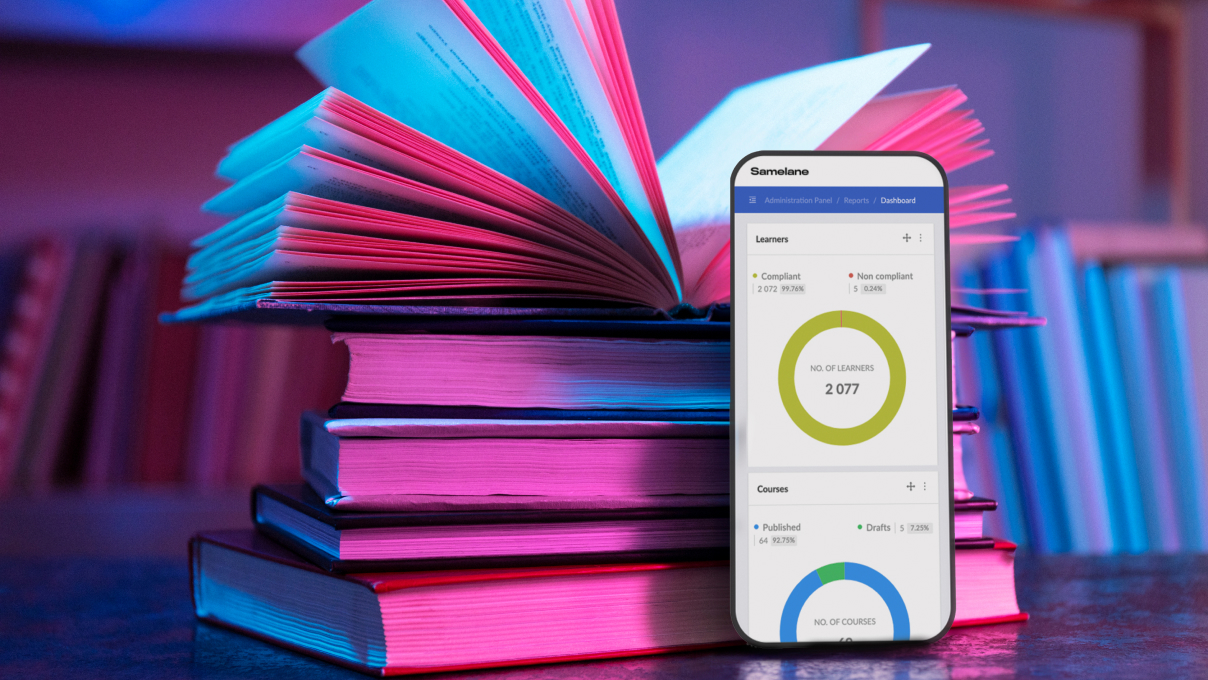The debate between online and traditional classroom learning has been ongoing for years, fueled by the surging interest and participation in online education. This trend is expected to continue, with the online education market projected to grow at a compound annual growth rate (CAGR) of 8.56% between 2024 and 2029, reaching a staggering market volume of US$279.30 billion by 2029 [source].
The online education market is experiencing significant growth fueled by several key factors. First, macroeconomic trends, such as increased global technology adoption and widespread internet connectivity, have made online education far more accessible. The pandemic has accelerated accessibility further, leading to the diffusion of online education platforms. We also face the increasing demand for continuous learning and upskilling across various industries.
Online learning growth isn’t only dictated by the macroeconomy. Customers, particularly working professionals, eagerly turn to online education for its convenience and availability. They can gain new skills at their own pace and in their free time, not restrained by traditional learning schedules. Even regular students, in fact, 42% of them, state that convenience was their main motivator when enrolling in online education [source].
Comparing online learning and traditional methods is crucial for understanding the ever-changing education landscape. In this article, we will delve into the advantages and disadvantages of both approaches to help you make an informed decision about your or your employees’ educational journey. If you’re offering tutoring services, a custom tutoring flyer template can help you stand out in the crowded education market. Highlight the convenience and flexibility of your tutoring sessions, whether online or in-person, and emphasize your expertise and success rates.

Online learning vs traditional learning: a comparative analysis
Contemporary learners face a decision: should they pursue the conventional path of education or embrace the flexibility of online learning? This comparative analysis aims to unpack the key advantages and disadvantages of online and traditional learning, providing a clear picture for informed decision-making.
Flexibility and accessibility
Online learning offers unmatched flexibility. With an internet connection, students can access course materials and lectures anytime, anywhere, and revisit them whenever they need clarification or additional study time. This accessibility breaks down geographical barriers and opens doors to a diverse range of learners who might otherwise have limited access to traditional learning opportunities. Additionally, online learning platforms often offer a more comprehensive range of courses compared to traditional institutions, catering to more specialized interests or niche fields.
In contrast, traditional classroom learning presents limited flexibility. It follows a structured approach, requiring students to attend classes physically at specific locations and times. While this can foster a sense of routine and discipline, it may be challenging for individuals with work, family, or work schedules. In traditional learning, access to learning materials might be limited, and missing a class puts students behind. Additionally, this format is less accessible for those far from educational institutions.
Learner interaction and engagement
Virtual classrooms facilitate asynchronous communication and enable students to actively participate in discussion forums, breakout rooms, and collaborative projects. However, the lack of real-time face-to-face interaction makes building rapport with classmates more challenging. Regarding engagement, online learning platforms can incorporate engaging multimedia elements like videos, simulations, and gamification. On the other hand, it requires a high degree of self-discipline and time management skills.
Traditional learning excels in providing direct interaction between students and instructors. The physical classroom environment facilitates dynamic discussions, hands-on learning experiences, and instant feedback, fostering a sense of community and enhancing social skills. However, passive lectures or repetitive exercises can disengage students, and larger class sizes result in not all students participating.
Learning pace and self-discipline
Online learning allows learners to set their own pace and study when not distracted by other chores. However, this flexibility can be a double-edged sword. It is advantageous for self-motivated learners, but procrastination and poor time management can lead learners to fall behind.
The curriculum and class schedule predetermine the pace in a traditional learning setting. This structured approach can benefit students who prefer a fixed timeline and need external motivation. On the other hand, some learners may find the pace too slow, while others might struggle to keep up.
Learning materials and resources
E-learning platforms employ diverse multimedia resources, such as interactive quizzes, videos, and simulations, to enhance the learning experience. These dynamic materials cater to various learning styles, making the educational process more engaging and interactive. Students can access diverse educational options, such as specialized subjects, that might not be available in their local institutions.
Traditional learning relies heavily on physical textbooks, classroom lectures, and written assignments. While these resources may be valuable, they lack the interactive elements. Traditional educational institutions have limited course offerings, especially in specialized or emerging fields, making it hard to pursue specific interests.
Learning environment
Online learning provides a flexible and customizable environment where students can choose their study space and tailor it to suit their preferences. Learning in familiar and comfortable surroundings enhances their concentration and focus. However, this environment can be susceptible to distractions at home or work.
Traditional learning occurs in classrooms with fixed settings and limited personalization options. Being free from distractions present at home or work helps students focus. While some students thrive in this structured environment, others might find it restrictive and uncomfortable.
Assessment and evaluation
Online learning platforms offer a wide variety of assessment methods. These include quizzes, written assignments, portfolios, and exams held online. This format is also helpful for students with test anxiety. While it allows for automated grading and quick feedback, it also leaves room for cheating.
Traditional learning often relies heavily on standardized tests, presentations, and midterms to assess student knowledge. These assessments provide a relatively objective measure of learning outcomes. However, large classes limit opportunities for personalized feedback.
Learning tools
Online learning platforms offer a wealth of digital resources, reflecting the distinct nature of student learning styles. Online learners benefit from multimedia materials that enhance the learning experience. On the flip side, the abundance of digital resources can be overwhelming for some learners.
Traditional classrooms offer access to physical resources such as textbooks, whiteboards, projectors, and labs These resources can provide students with a tangible learning experience and allow for hands-on practice. Physical resources are often confined to the classroom or library, limiting access for students outside of designated hours. Availability can also be restricted, especially for high-demand materials.
Keeping up with the times
As both educational methods continue to evolve, incorporating technological tools in traditional classrooms and refining online learning platforms highlight the importance of finding the right mixture to optimize the learning experience. This focus on effective learning environments has led to the emergence of a third option: blended learning, combining classroom and online tutoring strengths.
Ultimately, the choice between online, traditional, or blended learning depends on individual preferences, learning styles, and specific circumstances. However, with its flexibility and adaptability, online education will likely become increasingly prevalent in the coming years and decades as it adapts to the evolving educational landscape.











